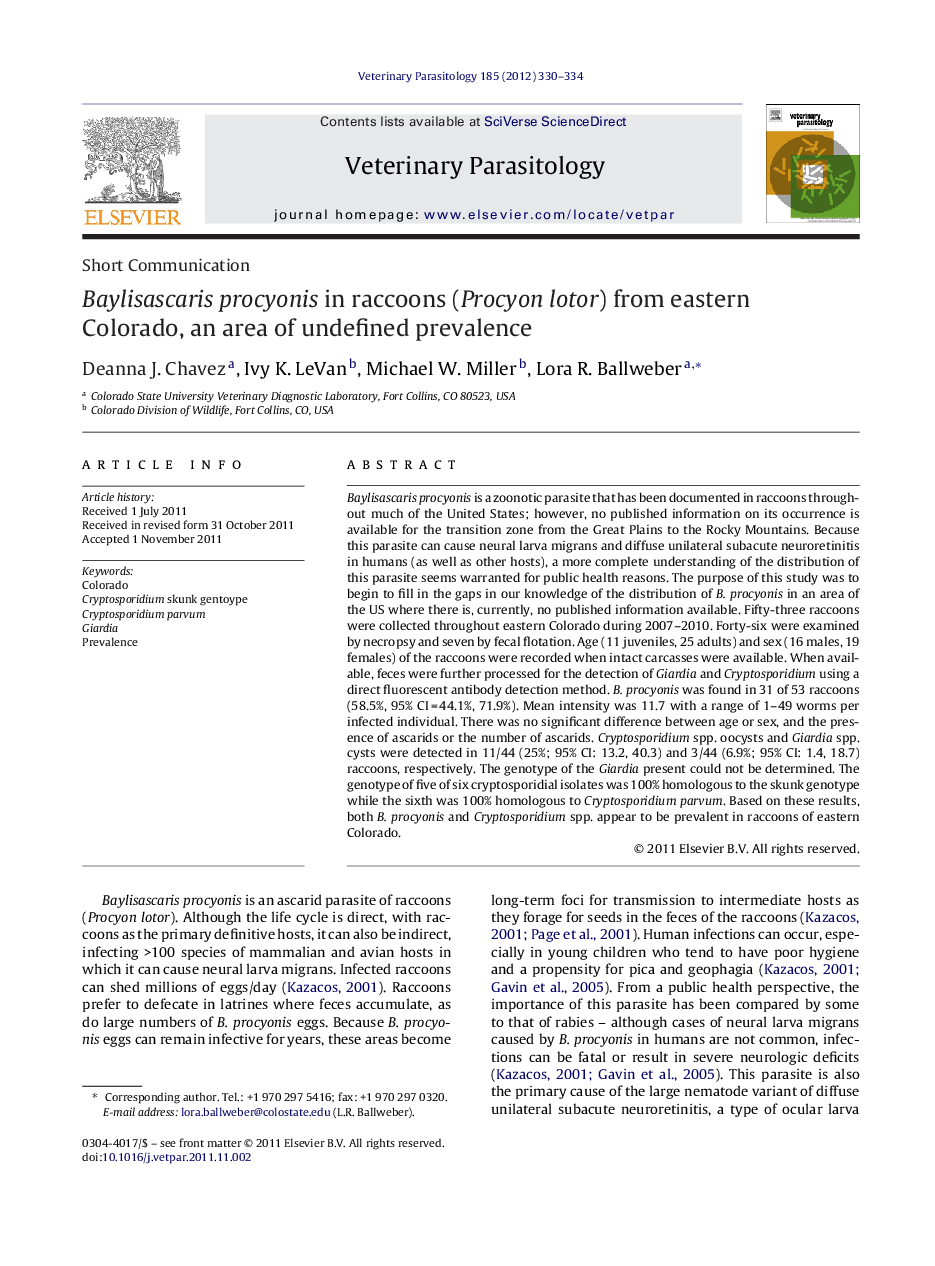| کد مقاله | کد نشریه | سال انتشار | مقاله انگلیسی | نسخه تمام متن |
|---|---|---|---|---|
| 5805177 | 1555716 | 2012 | 5 صفحه PDF | دانلود رایگان |

Baylisascaris procyonis is a zoonotic parasite that has been documented in raccoons throughout much of the United States; however, no published information on its occurrence is available for the transition zone from the Great Plains to the Rocky Mountains. Because this parasite can cause neural larva migrans and diffuse unilateral subacute neuroretinitis in humans (as well as other hosts), a more complete understanding of the distribution of this parasite seems warranted for public health reasons. The purpose of this study was to begin to fill in the gaps in our knowledge of the distribution of B. procyonis in an area of the US where there is, currently, no published information available. Fifty-three raccoons were collected throughout eastern Colorado during 2007-2010. Forty-six were examined by necropsy and seven by fecal flotation. Age (11 juveniles, 25 adults) and sex (16 males, 19 females) of the raccoons were recorded when intact carcasses were available. When available, feces were further processed for the detection of Giardia and Cryptosporidium using a direct fluorescent antibody detection method. B. procyonis was found in 31 of 53 raccoons (58.5%, 95% CIÂ =Â 44.1%, 71.9%). Mean intensity was 11.7 with a range of 1-49 worms per infected individual. There was no significant difference between age or sex, and the presence of ascarids or the number of ascarids. Cryptosporidium spp. oocysts and Giardia spp. cysts were detected in 11/44 (25%; 95% CI: 13.2, 40.3) and 3/44 (6.9%; 95% CI: 1.4, 18.7) raccoons, respectively. The genotype of the Giardia present could not be determined. The genotype of five of six cryptosporidial isolates was 100% homologous to the skunk genotype while the sixth was 100% homologous to Cryptosporidium parvum. Based on these results, both B. procyonis and Cryptosporidium spp. appear to be prevalent in raccoons of eastern Colorado.
Journal: Veterinary Parasitology - Volume 185, Issues 2â4, 30 April 2012, Pages 330-334